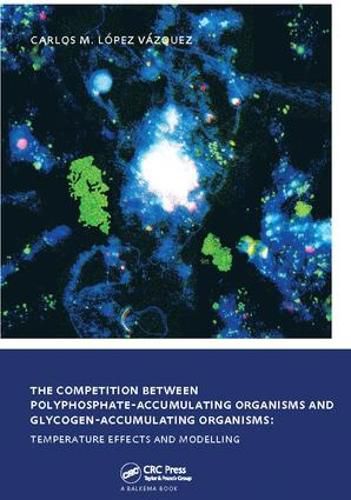Readings Newsletter
Become a Readings Member to make your shopping experience even easier.
Sign in or sign up for free!
You’re not far away from qualifying for FREE standard shipping within Australia
You’ve qualified for FREE standard shipping within Australia
The cart is loading…






The over-enrichment of surface water bodies with phosphorus compounds can lead to eutrophication resulting in reduced photosynthetic activity, oxygen depletion, production of toxic compounds and, ultimately, loss of plant and animal species. Due to relatively high removal efficiency, economy and environmentally-friendly operation, enhanced biological phosphorus removal (EBPR) in activated sludge wastewater treatment systems is a popular technology to control and prevent eutrophication in surface water bodies. EBPR can be implemented by promoting the enrichment of the system with polyphosphate-accumulating organisms (PAO). However, EBPR process may suffer of instability and unreliability experiencing process upsets, deterioration and even failure. Among other factors, the appearance of glycogen-accumulating organisms (GAO), which compete with PAO, has been hypothesized to be the main cause of deterioration of the EBPR process performance. In this research, the effects of key environmental and operating conditions influencing the PAO-GAO competition were addressed through undertaking different studies at both lab- and full-scale and by applying mathematical modelling. It contributes to get a better understanding about the factors affecting the PAO-GAO competition and, thus, the stability and reliability of the EBPR process in activated sludge systems. The findings obtained in this research may prove useful towards optimization of full-scale EBPR plants.
$9.00 standard shipping within Australia
FREE standard shipping within Australia for orders over $100.00
Express & International shipping calculated at checkout
The over-enrichment of surface water bodies with phosphorus compounds can lead to eutrophication resulting in reduced photosynthetic activity, oxygen depletion, production of toxic compounds and, ultimately, loss of plant and animal species. Due to relatively high removal efficiency, economy and environmentally-friendly operation, enhanced biological phosphorus removal (EBPR) in activated sludge wastewater treatment systems is a popular technology to control and prevent eutrophication in surface water bodies. EBPR can be implemented by promoting the enrichment of the system with polyphosphate-accumulating organisms (PAO). However, EBPR process may suffer of instability and unreliability experiencing process upsets, deterioration and even failure. Among other factors, the appearance of glycogen-accumulating organisms (GAO), which compete with PAO, has been hypothesized to be the main cause of deterioration of the EBPR process performance. In this research, the effects of key environmental and operating conditions influencing the PAO-GAO competition were addressed through undertaking different studies at both lab- and full-scale and by applying mathematical modelling. It contributes to get a better understanding about the factors affecting the PAO-GAO competition and, thus, the stability and reliability of the EBPR process in activated sludge systems. The findings obtained in this research may prove useful towards optimization of full-scale EBPR plants.